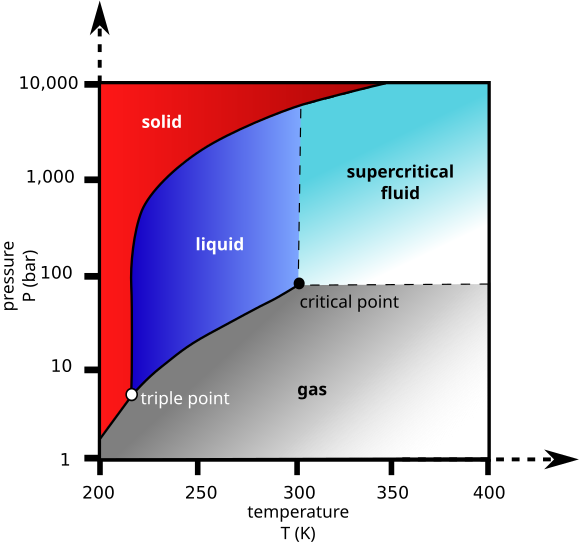How would oceans of supercritical CO2 on Venus-like exoplanets look like/behave?
Carbon dioxide turns supercritical above a pressure of 73 atm and 304.25 K (31.10 °C). The surface of Venus fullfils these conditions.
The density of the air at the surface is 67 kg/m3, which is 6.5% that of liquid water on Earth. The pressure found on Venus's surface is high enough that the carbon dioxide is technically no longer a gas, but a supercritical fluid. This supercritical carbon dioxide forms a kind of sea that covers the entire surface of Venus. This sea of supercritical carbon dioxide transfers heat very efficiently, buffering the temperature changes between night and day.
However supercritical CO2 on the surface of Venus still behaves very much like a gas. Some research suggests that Venus might once had more liquid-like supercritical CO2 on its surface.
The researchers found that depending on the pressure and temperature, clusters of gas-like supercritical carbon dioxide might have formed in this supercritical carbon dioxide on Venus that "looked like soap bubbles," Bolmatov said. "A bubble of gas that is covered by a thick layer of liquid."
Additionally I found this picture of supercritical CO2.

So is an Exo-Venus with true oceans of supercritical CO2 plausible? How would the ocean look like, visually and chemically? I assume that we would simply need greater pressures to get these oceans. So a super-Earth with more gas and higher gravity seems to be the way to go. Would the oceans and coastlines look weirdly earth-like or would the surface be a bubbling mess of "soap-bubbles"? What other chemicals could be found in these oceans? What does the liquid CO2 solve? Will the oceans be salty? Acidic or basic?
This post was sourced from https://worldbuilding.stackexchange.com/q/161139. It is licensed under CC BY-SA 4.0.





















0 comment threads